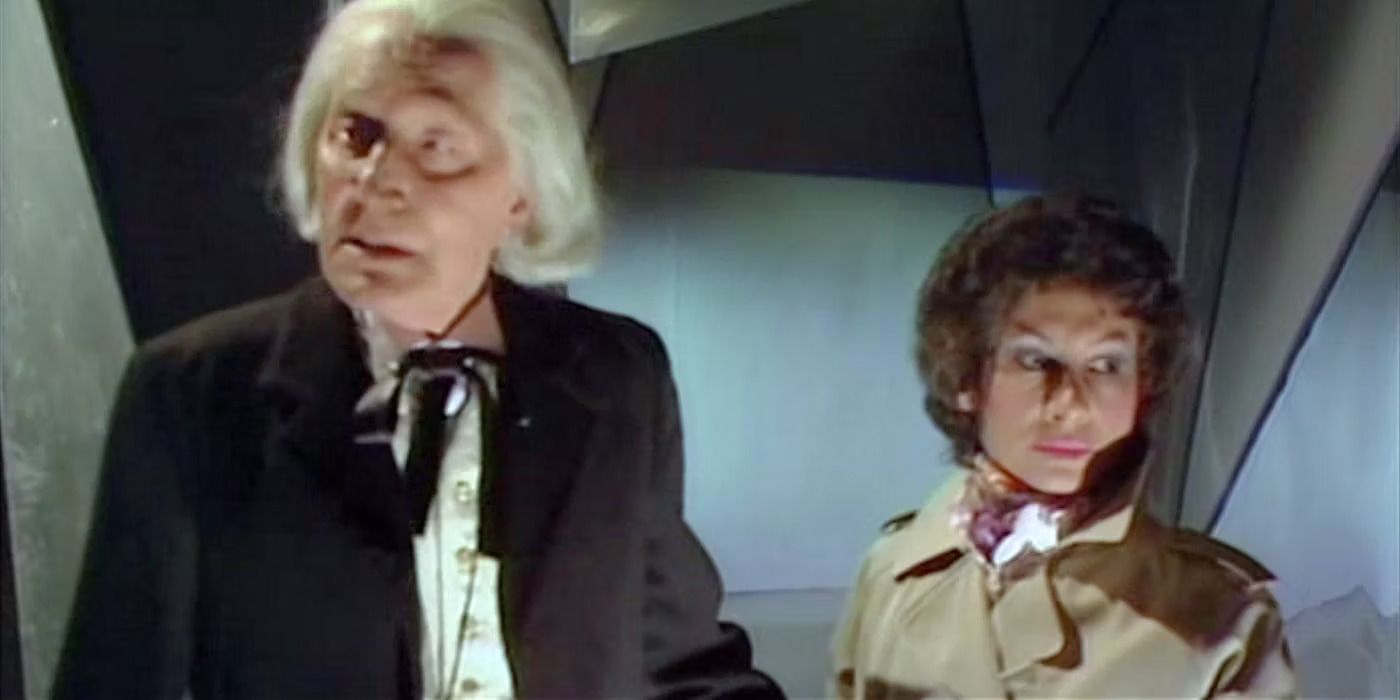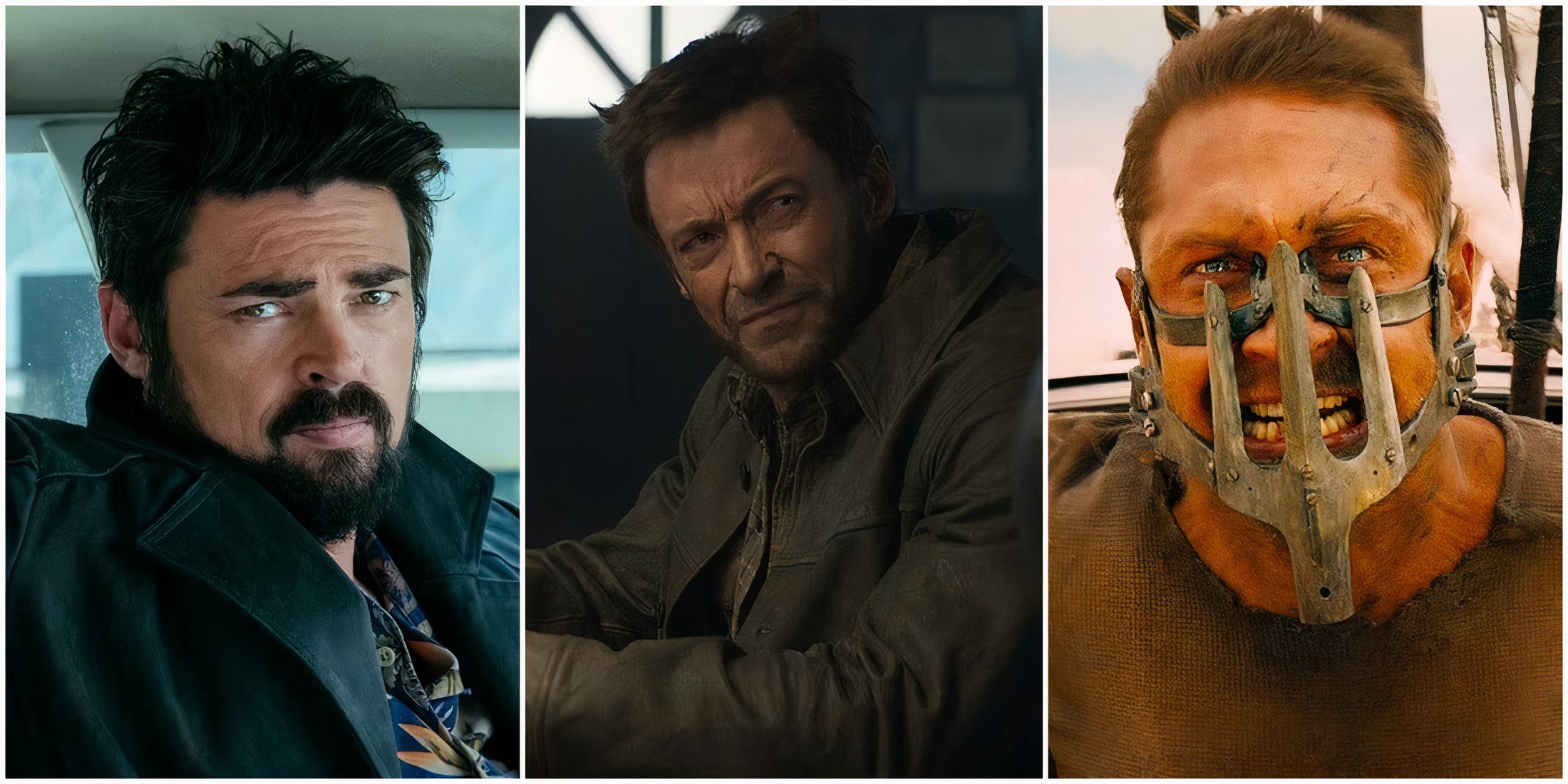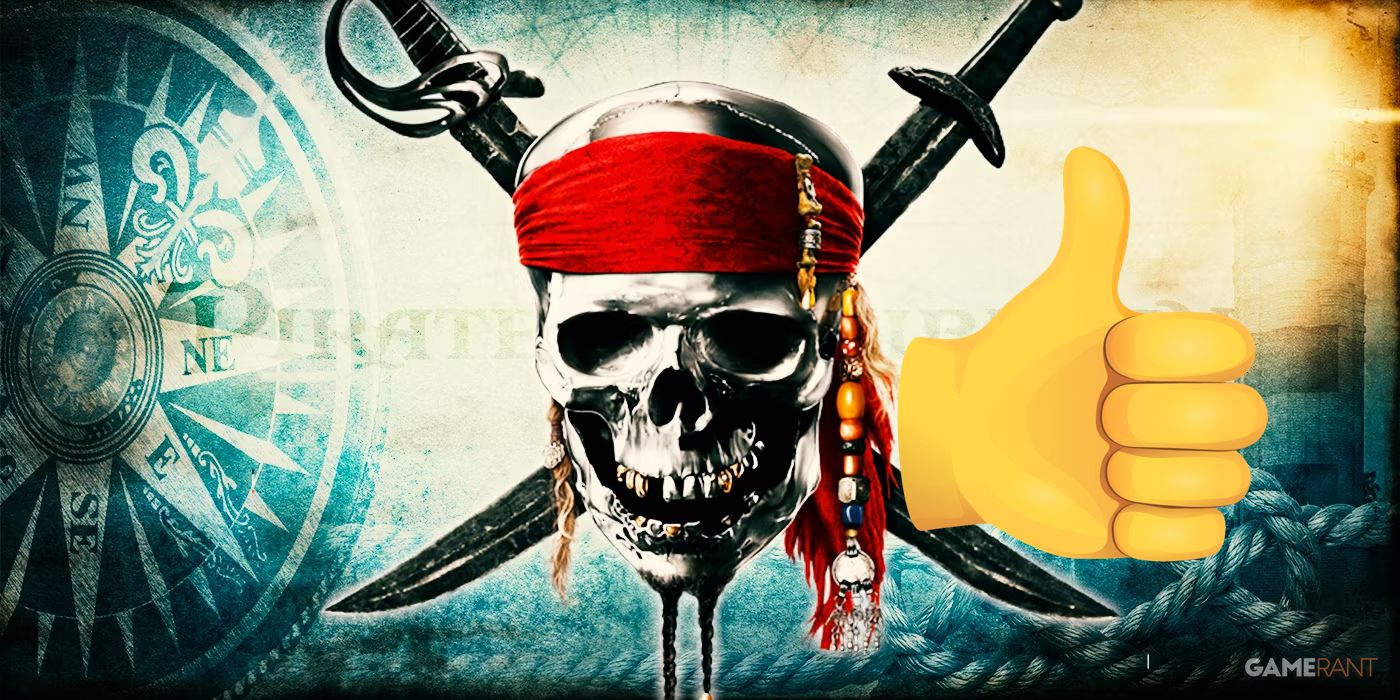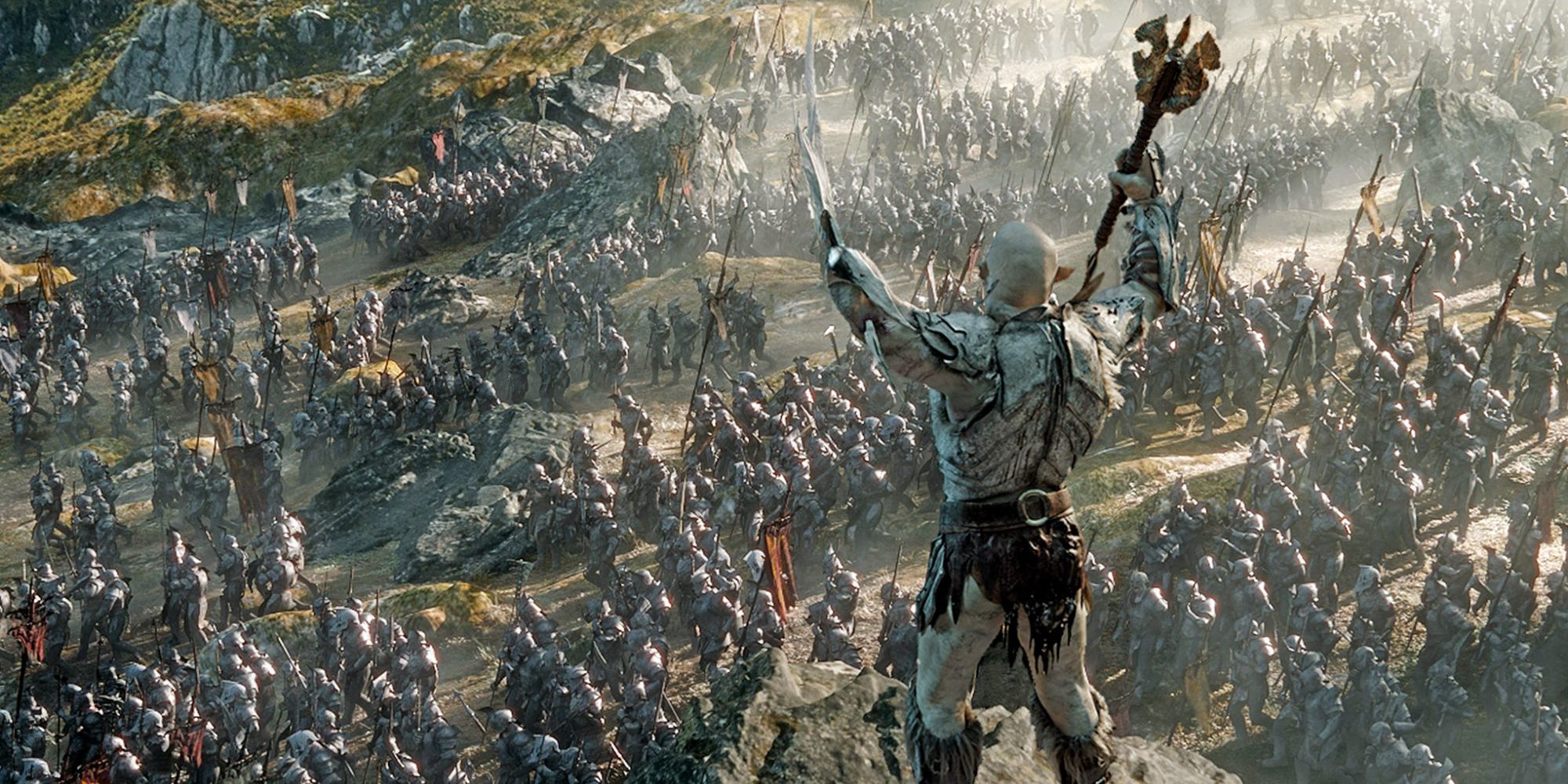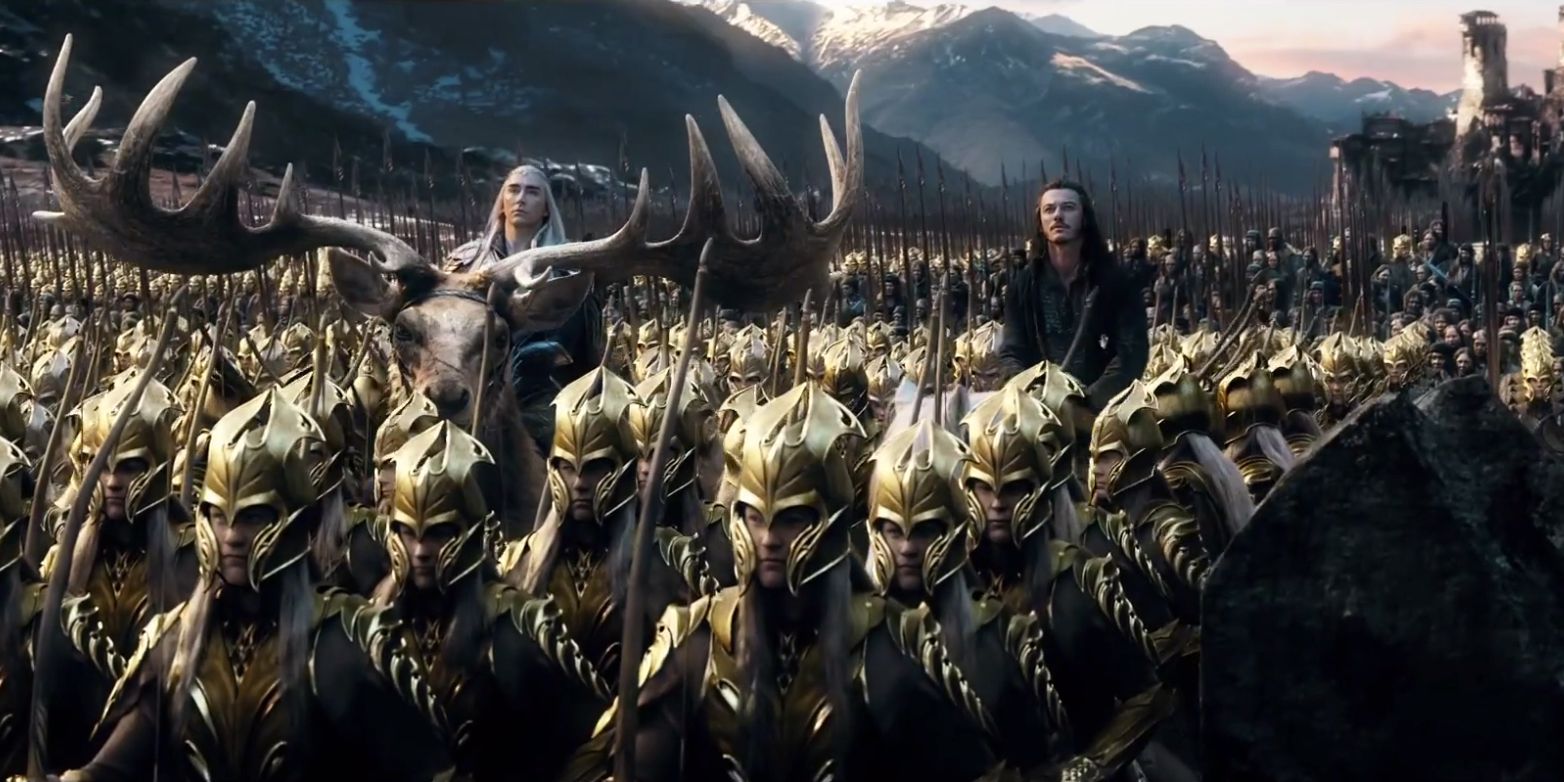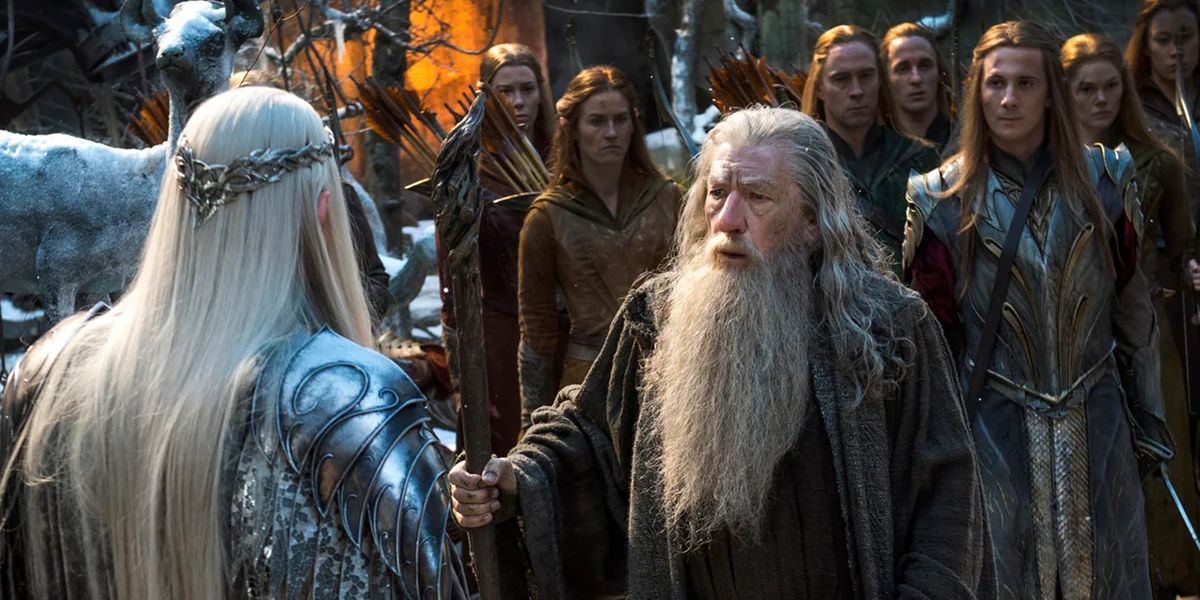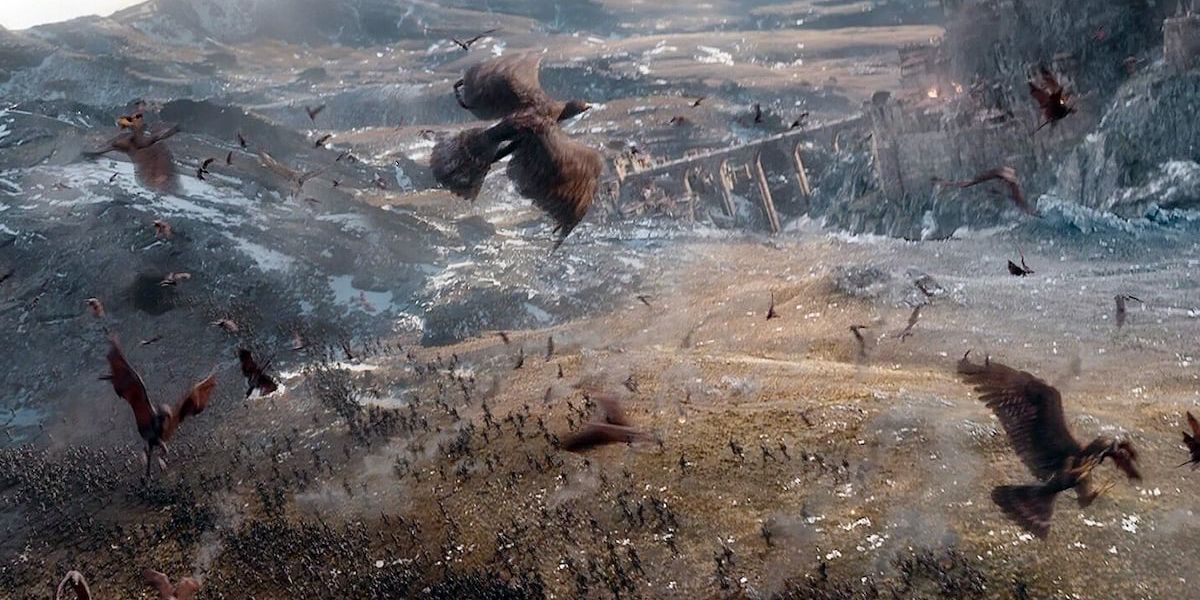Set in the year 2941 of the Third Age, the Battle of the Five Armies took place on and near the Lonely Mountain. It was notable for breaking the strength of the northern Orcs and, thus, preventing the spread of Sauron’s power. It was also this very battle where Thorin II Oakenshield was killed, along with his nephews Fíli and Kíli, who died defending him.
In an early conception of the battle, the Dwarves did not participate in it at all. Although this later changed in the final version, the book and film adaptation of The Hobbit slightly differed in their portrayal of the Battle of the Five Armies.
Who Were the Five Armies?
According to J.R.R. Tolkien, “upon one side were the Goblins and the Wild Wolves, and upon the other were Elves and Men and Dwarves” in the Battle of the Five Armies. However, it should be noted that he used ‘Orcs’ and ‘Goblins’ interchangeably, even though they were shown as separate races in both the trilogies of The Lord of the Rings and The Hobbit. Essentially, the warring parties included over 1000 Silvan Elves of Mirkwood, 500 Dwarves of the Iron Hills and 200-300 Lake-men against “innumerable” Orcs and Wargs of the Misty Mountains and the Grey Mountains. In contrast, the film The Hobbit: The Battle of the Five Armies showed that the battle broke out between the Elves of Mirkwood, the Dwarves of Erebor, the Lake-men and the Orcs of Gundabad and Don Guldur (instead of the Wargs).
Both Tolkien and Peter Jackson left out the Eagles in their description of the battle, even though several hundred of them joined in the last stretch to fight against the Orcs. In addition, Gandalf, Bilbo Baggins and the skin-changer Beorn also played a role in the battle, but they had not been officially listed among the five armies.
Why Were the Five Armies Fighting?
When Thorin and Company arrived at the Lonely Mountain to reclaim their treasure from the great dragon Smaug, the latter mistook Bilbo as a man of Lake-town and set out to Esgaroth for revenge. He succeeded in burning down the whole town until Bard the Bowman finally managed to strike him with the Black Arrow.
After learning that Smaug had been killed, the Wood-elves (led by the Elven king Thranduil) set forth to the Lonely Mountain to take back their own heirlooms, the White Gems of Lasgalen. Upon arrival at Long Lake, they stopped to offer help when they saw the disaster that had engulfed Lake-town. Bard, the heir of the Lord of Dale Girion, also believed that he was entitled to one-twelfth of the treasure, especially since he had slain Smaug in the first place. Moreover, the dragon had also stolen much from Dale, making the treasure rightfully his. Most importantly, the Dwarves had triggered Smaug to burn the town to the ground, and now compensation was needed to rebuild the home of the Lake-men. As a result, a host of the Elves and Men marched towards Erebor, only to discover that Thorin, plagued by dragon-sickness, refused to share any of the treasure. Eventually, the Elves and Men gathered an army to besiege the Dwarves inside Erebor until Thorin agreed to hand them their share of the gold. However, Thorin sent a message through Röac the Raven to Dáin Ironfoot of the nearby Iron Hills, who arrived at Erebor with 500 heavily armed Dwarves.
Unknown to the three armies, the Necromancer in Dol Guldur had sent an army under the Orc leader Bolg (replaced with Azog the Defiler in the film) to stop the Quest of Erebor in order to secure the Lonely Mountain and take over Angmar — thus, spreading his influence over the northern kingdoms of Middle-earth. When Gandalf finally arrived to warn that the Orcs and Wargs were launching a full-scale attack, the Dwarves, Elves and Men decided that Sauron’s forces posed a bigger threat and they should unite against them.
Who Won the Battle of the Five Armies?
The Dwarves and Lake-men joined forces on one spur of the Mountain, while the Elves assembled on the other. A few lined up across the entrance to the valley, in order to lure the enemy between the two spurs. Bilbo, invisible due to the Ring, also withdrew to Ravenhill along with Gandalf.
The Orcs and Wargs arrived “like a sea of locusts” and were trapped according to plan. Despite suffering from heavy losses, however, Sauron’s army was still superior in number, so the allied forces eventually lost their initial advantage. Many of the Orcs began to attack the mountain from the opposite side, until Thorin and Company threw down the stone wall they had built in front of the gates of Erebor, which killed a large number. They then emerged, in possession of the finest armor and weapons that they could find among the hoard of treasure, and led the rest of their army down into the valley to fight. However, they failed to get past Bolg’s bodyguard, and the battle turned against them once again. It was at this point that the Giant Eagles arrived, led by the Great Eagle, who helped drive off the enemy forces that had scaled Erebor. Beorn also joined the battle in the shape of a giant bear, ultimately killing Bolg himself. After this, the Orcs and Wargs panicked and ran away. They were hunted down by the victors later on, with the survivors eventually dying in the forest of Mirkwood.

